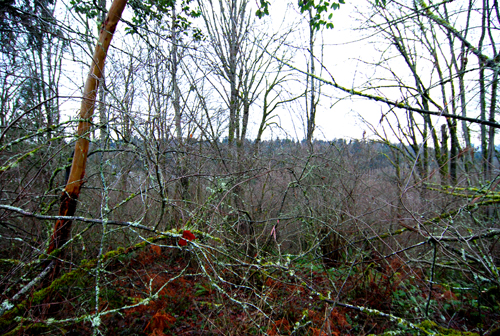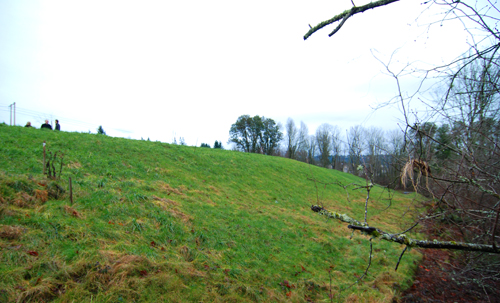The work an architect does on site is some of the most important time spent on a project. The significance of a site visit is far more involved than simply documenting the physical facts of a property. From the moment of approach all the way down to walking the site and running your hands through the moss, there is a surge of information that saturates the senses. There is an immeasurable difference between seeing topographical lines on paper and walking the slope of a site. It is how this information is perceived, interpreted and filtered that will lead to a project that inspires and fulfills.
For us, the initial rush over the senses is essential –those qualities of the site that hit you first. It’s these characteristics of earth and light and texture that hit a chord. These primal attributes are meaningful and good architecture gives them a lasting role in the design. Good architecture boils down these traits to their essence –letting them inform and evolve the design process.
Naturally the technicalities of any site must also be documented and reviewed; like property lines, critical areas, steep slopes, utilities, soil bearing capacity, etc. But what we’re talking about here is more cerebral. These are the characteristics that will make the project timeless and significant.
Is the ground damp, is it dry? What is the most pleasing way in which to approach the site? How do the sun’s rays reach the site, is the light filtered through trees? Do the site “constraints” provide interesting design opportunities?
Site visits are an incredible time in the design process, and not a step that should done merely perfunctory. The volume of qualities to be absorbed from a site visit is immense and unique to each site. Here are a handful that we enjoy focusing on (in no particular order):
– What is the slope like, and what does it feel like to walk it?
– What is the view like? Even if it’s just local or territorial it’s significant.
– Which views should be enhanced and which should be filtered or screened?
– How do the clients react to the property, what are the first things they speak to?
– Where do the clients go on the property, what are the first things they look at?
– Are there special plants or trees to be celebrated?
– How do the wind, breeze and airflow move through the site?
– Where is the arc of sunlight in relationship to the site?
– Are there factors about the site that could change in the future?
– Could a house be built on an adjacent property to impede a view or jeopardize privacy?
– How does the water move on site?
– What are the seasonal changes within the landscape?
Let us know what you like to crunch on while you’re out on site.
Cheers







